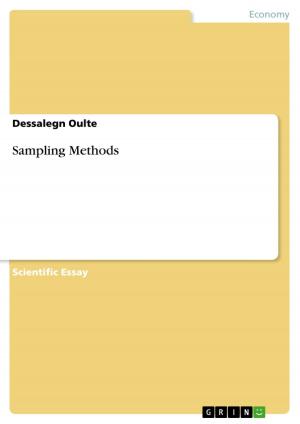The protection of individual rights in the EU law system. Law provision's direct effect, applicability of law sources
Nonfiction, Reference & Language, Law, International| Author: | Ginka Tchervenkova | ISBN: | 9783656006053 |
| Publisher: | GRIN Publishing | Publication: | September 13, 2011 |
| Imprint: | GRIN Publishing | Language: | English |
| Author: | Ginka Tchervenkova |
| ISBN: | 9783656006053 |
| Publisher: | GRIN Publishing |
| Publication: | September 13, 2011 |
| Imprint: | GRIN Publishing |
| Language: | English |
Essay from the year 2011 in the subject Law - European and International Law, Intellectual Properties, University of Hamburg, language: English, abstract: The EU law is an independent law order. It is not a kind of international law, and it does not fall into the scope of the internal law of the EU Member States. It is to be applied by the EU Member-States on their territories as a separate legal system. Supremacy and direct effect represent the core principles of the EU law system. Direct effect is a characteristic related to the EU law provisions, and not to the EU law instruments and provisions' sources. EU law provisions can produce a vertical direct effect as well as a horizontal direct effect. Provisions that can produce both a vertical and a horizontal direct effect are recognised as provisions with a 'full direct effect'. The notions of 'immediate enforceability' and 'direct effect', both implied by the definition of 'direct applicability' as contained in the Art 249 EC, are to be clearly distinguished from each other. 'Direct applicability' as synonymous with 'immediate enforceability' is only to be placed in relation to the sources of EU law, and as good as never in relation to the provisions contained therein. It is justified to be spoken on 'direct effect' solely in relation to EU law provisions, and as good as never in relation to EU law acts (sources). Regulations are mandatory in their entirety. By being compulsory in all their elements, Regulations most clearly differ from Directives that are compulsory as to the results only. Regulations do have direct effect in their entirety. The existence of provisions in a given Regulation that require measures of application adopted by the Member States, however, does not preclude the Regulation itself from having a direct effect as to the rest of its provisions. Thus, it is for national courts not just to automatically apply those Regulation's provisions that have an explicit direct effect but also to control the consistency of the adopted national measures with a given Regulation.
Essay from the year 2011 in the subject Law - European and International Law, Intellectual Properties, University of Hamburg, language: English, abstract: The EU law is an independent law order. It is not a kind of international law, and it does not fall into the scope of the internal law of the EU Member States. It is to be applied by the EU Member-States on their territories as a separate legal system. Supremacy and direct effect represent the core principles of the EU law system. Direct effect is a characteristic related to the EU law provisions, and not to the EU law instruments and provisions' sources. EU law provisions can produce a vertical direct effect as well as a horizontal direct effect. Provisions that can produce both a vertical and a horizontal direct effect are recognised as provisions with a 'full direct effect'. The notions of 'immediate enforceability' and 'direct effect', both implied by the definition of 'direct applicability' as contained in the Art 249 EC, are to be clearly distinguished from each other. 'Direct applicability' as synonymous with 'immediate enforceability' is only to be placed in relation to the sources of EU law, and as good as never in relation to the provisions contained therein. It is justified to be spoken on 'direct effect' solely in relation to EU law provisions, and as good as never in relation to EU law acts (sources). Regulations are mandatory in their entirety. By being compulsory in all their elements, Regulations most clearly differ from Directives that are compulsory as to the results only. Regulations do have direct effect in their entirety. The existence of provisions in a given Regulation that require measures of application adopted by the Member States, however, does not preclude the Regulation itself from having a direct effect as to the rest of its provisions. Thus, it is for national courts not just to automatically apply those Regulation's provisions that have an explicit direct effect but also to control the consistency of the adopted national measures with a given Regulation.















